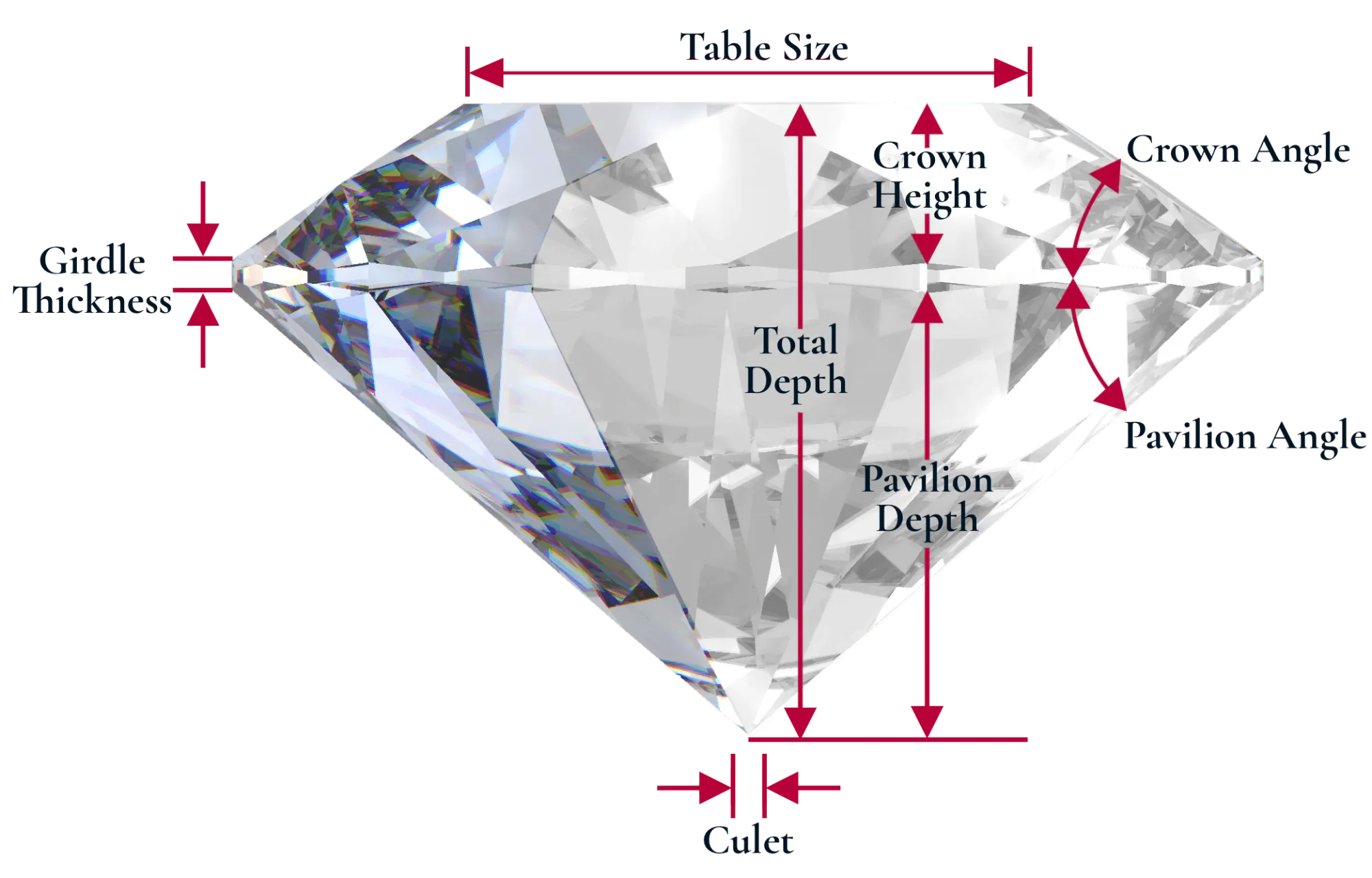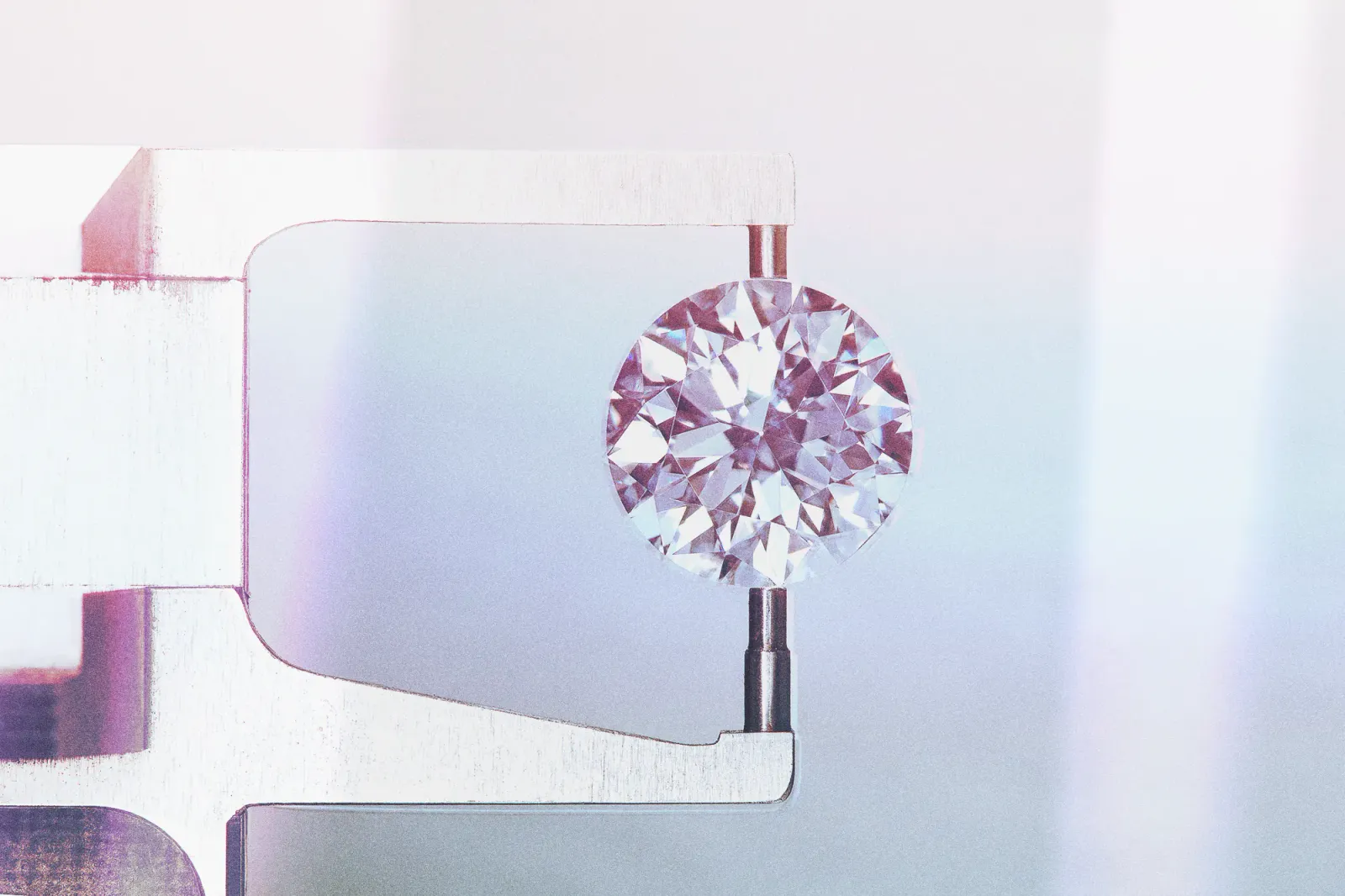When buying an engagement ring the size of the diamond is usually one of the first things people think about. 'Carat' is the unit of measurement for the weight of a diamond. It is not a measurement of size, although broadly speaking the higher the carat weight, the larger the diamond. Given the value of diamonds, they are weighed very accurately. One carat is equal to 200 milligrams, and each carat is divided into 100 points. For example an 80 point diamond weighs 0.8 carats. This system is used universally, so you don't need to worry about different vendors using different standards for weight.
How does carat affect value?
Carat weight is the factor with the greatest impact on price, but an increase in weight doesn't simply mean an increase in value: the other Cs, cut, color and clarity all contribute to a diamond's price. If you have a flawless, colorless 1 carat diamond it is going to have a considerably greater value than a 1 carat diamond with visible inclusions and a low color grade. So, getting your head around each of the 4Cs is vital; only then can you decide how to balance the qualities to buy the diamond that's right for you....and even make savings along the way.
If you're aiming to maximize the size of diamond you purchase, you can buy a bigger diamond with stunning brilliance if you make some compromises in color and clarity grade. By going for a diamond with a 'near colorless' grade such as G, H or even I, you can put more of your budget against carat weight without compromising too greatly on the appearance of the stone. A word of warning though - be cautious of making compromises when it comes to the cut of a diamond; this can affect both how beautiful it looks and how big it looks (more on this below).

It also pays to note that prices do not rise in a linear fashion with carat weight, even when all other qualities are equal. A two carat diamond will be far more expensive than two, one carat diamonds. This is because large rough diamonds are rarer finds.
There are also key weights at which prices jump, at the half carat and full carat marks. If you buy a diamond just shy of these weights there are definite savings to be made, while the difference in size will be imperceptible. Opting for a 1.4 carat diamond rather than a 1.5 carat can save you a significant amount.
Ensure you don't pay for 'dead' carat weight
Many things are taken into account when a diamond is cut, and one of those is the end carat weight. Cut is often considered the most important of the 4Cs because an excellently cut diamond maximizes the display of light being returned from the stone. Carat weight can significantly increase the value of a diamond, and therefore the cut can be made to prioritize the end weight rather than brilliance. However if a diamond is not cut well, the added weight may actually reduce the diamond's light return and therefore brilliance. A duller stone looks smaller than one full of sparkle.
In an 'ideal or 'excellent' cut diamond, the ratios between the width and depth of a diamond have been calculated for brilliance. Therefore the stone is not too deep - carrying too much weight in its depth - nor is it too shallow - carrying too much weight in its width. If a diamond is too deep, it's extra weight is hidden underneath, you can't see it from above when set in a ring, and it's doing nothing to bounce light back out to the eye. If a diamond is too shallow, it's extra width may make the stone look bigger face up, but again, the light is escaping through the diamond rather than bouncing back to give life and beauty.

The depth of the girdle can also hide unnecessary weight. A diamond with a very thick girdle can look smaller than a diamond with a medium girdle, because it's carrying weight in the wrong place. And a very thick girdle is doing nothing for a diamond's beauty (note that a girdle that's too thin is susceptible to damage so opt for a medium thickness).
The bottom line is that cut is king. An excellent cut = brilliance = more beauty and impact = bigger looking!

